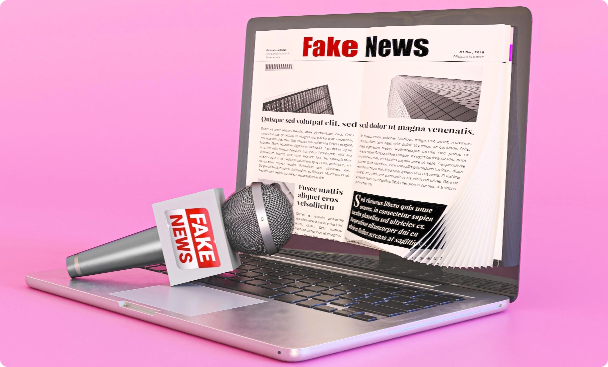
How to Deal with Negative Media Coverage and Protect Your Brand
Bad press can feel like a storm hitting your reputation. You watch as headlines or social media comments pile up, and it feels like control is slipping away. Negative media coverage can harm your business or personal image, which leads to lost trust, customers, and revenue. Ignoring it only makes things worse.
But here’s the good news – you’re not powerless. There are proven ways to manage and recover from negative press. In this article, you’ll learn how to deal with negative media coverage and turn a tough situation into a chance to rebuild trust and confidence.
Table of Contents
Negative Media Coverage – Meaning
Negative media coverage can take many forms, such as bad press, fake news, damaging reviews, or even malicious campaigns. This includes situations such as product recalls, public scandals, data breaches, or social media backlash, all of which can quickly spiral out of control.

If you leave them unchecked, negativity can spread fast, weaken trust, and damage your reputation. Did you know that 90% of consumers avoid brands with a negative reputation?
Recognizing the type of negative PR you’re dealing with is important. It’s the first step to creating a response that fixes the issue and repairs your brand’s image.
Negative Media Coverage Examples
Negative media coverage can happen when things go wrong, even if you don’t expect it. Take Samsung’s 2016 Galaxy Note 7 crisis, for example. Phones were catching fire because of battery problems, which forced the company to recall 2.5 million devices. Things got worse when even the replacements had the same issue and forced Samsung to stop making the phone altogether.
Another example is the 2017 United Airlines incident. A passenger was dragged off an overbooked flight, and the shocking video quickly went viral. People were outraged, and United had to change how they handled overbooking to win back trust.
These examples show how bad PR can quickly grow into something much bigger. The faster you deal with problems like this, the better chance you have to protect your reputation and bounce back.
White Hat Strategies for Dealing with Negative Media Coverage
Ethical and proactive strategies are your best tools when bad media coverage strikes. These “white hat” methods help you focus on addressing issues transparently while building trust and credibility. Here’s how you can stay ahead and handle challenges effectively.

Proactive Measures
The best way to handle a crisis is to be prepared before it happens. You can respond quickly when bad media coverage happens by taking steps to monitor your brand and build strong relationships.
Crisis Communication Plan
A solid crisis communication plan is your first line of defense. If something goes wrong, you’ll want a clear plan to guide your response. You can start by identifying potential risks your business could face. Think about possible scenarios, from product issues to negative comments spreading online.
Next, define the key messages you want to deliver. Keep them clear, honest, and focused on your values. Then, assign specific roles to your team. Decide who will speak to the media, monitor online comments, and handle customer concerns. Having this plan in place helps you act fast and avoid confusion during a crisis.
Media Monitoring
You can’t respond to bad media coverage if you don’t know it’s happening. That’s where media monitoring comes in. You can use tools such as Google Alerts or Brandwatch to track mentions of your brand in real time. Also, pay close attention to social media platforms because they are often the first places where negative stories spread.
Spotting problems early is important because even one negative article online can cause you to lose 22% of potential customers. This loss can rise to 70% if four or more negative articles appear. Monitoring public feedback helps you respond quickly and keep problems from growing larger.
Building Positive Relationships
Building good relationships with journalists and media outlets can help you in the long run. But you need to reach out to them during calm times, not during crises. Provide them with exclusive insights or positive stories about your business.
When journalists trust you and your brand, they are more likely to share your side of the story if something goes wrong. These relationships can make a big difference in how your story is told.
Reactive Measures for Dealing with Negative Media Coverage
When bad news spreads, your next steps can either calm the storm or make it worse. Acting quickly and responsibly is important to protect your reputation. These reactive strategies will help you regain control and address the situation effectively.

Immediate Acknowledgment
The faster you respond, the better. A quick acknowledgment shows that you take the situation seriously and care about those affected.
Even a short statement like “We’re aware and working to resolve this” can help. Think of Johnson & Johnson during the Tylenol crisis – by acting quickly and prioritizing customer safety, they rebuild trust.
Correct Misinformation
If false information is circulating, it’s necessary to address it. You should issue a press release or request corrections from the media directly.
Be professional and stick to the facts because defensiveness can make things worse. Clarifying what’s true helps you make sure that your audience gets the right story.
Taking Accountability
Sometimes, mistakes happen, and it’s important to own them. You should apologize sincerely and explain what you’re doing to fix the problem.
Customers respect honesty and clear actions over empty promises. Turning criticism into an opportunity to improve shows that you value feedback and are committed to growth.
Engaging with Stakeholders
Your customers, employees, and investors need reassurance during difficult times. Keep them informed with clear updates and action plans.
Let them know how you’re addressing the issue and what steps you’ll take to prevent future problems. This open communication builds confidence and trust on each side.
Using Social Media’s Power
Social media is your ally in managing bad news media coverage. Use your platforms to post updates, answer questions, and engage with your audience.
Also, you should respond respectfully to comments, even critical ones, and avoid deleting posts unless they violate the platform’s guidelines. Transparency can shift public sentiment in your favor.
Asking for Professional Help
Handling bad media coverage can feel overwhelming, but you don’t have to face it alone. Maximatic Media offers specialized services to remove negative search results, correct misinformation, and rebuild your reputation online.
From Google reviews removal to managing bad PR and creating positive media placements, we’re here to help you take control. Let us handle the hard work so you can focus on moving forward.
Black Hat Strategies for Dealing with Negative Media Coverage
Black hat strategies are unethical tactics some may use to counteract negative PR. While these methods might offer quick fixes, they can lead to serious consequences. Knowing these strategies helps you understand what to avoid and recognize if others use them against you.

Astroturfing
Some try to bury negative PR by flooding the internet with fake positive reviews. While this might temporarily balance criticism, it risks damaging your reputation if people find out about the deception. Genuine feedback always works better in the long run.
Smear Campaigns
Attacking critics or competitors with false claims is another black hat tactic. This approach might seem like a quick way to change the spotlight, but it often backfires and can harm your credibility. You should stick to addressing issues directly and honestly.
Legal Intimidation
Threatening lawsuits to silence critics may feel like taking control, but it often draws more negative attention. Instead of resolving the problem, you risk escalating it and appearing overly aggressive. Focus on solutions, not intimidation.
Spamming
Some people flood forums or social media with irrelevant content to distract people from the issues. This can frustrate your audience and make them lose trust in your brand. Clear and honest communication is always a better strategy.
When learning how to deal with negative media coverage, avoid these black hat tactics. They may provide temporary relief but often create bigger problems in the future. That’s why ethical strategies are key to lasting success.
PR for Crisis Management
Maintain a positive image and effectively manage crises with Maximatic Media’s PR services.

How to Turn Bad Press Into Opportunity
Negative press doesn’t have to define you. In fact, it can be a chance to show growth, resilience, and commitment to your values. When handled the right way, you can turn criticism into an opportunity to strengthen your reputation and build trust with your audience.

Problem-Solving Approach
Start by addressing the root cause of the problem that sparked the criticism and take clear actions to fix it, whether it’s a service failure or a public misstep. By taking accountability and actively working to improve, you show your customers that you value their concerns.
You can use this moment as an opportunity to raise your standards and show your audience you’re listening to their feedback.
Showcasing Resilience
Actions speak louder than words. So, tell your audience what you’re doing to fix the situation. When people see you making changes and improving, it helps them trust you again. Facing challenges and coming out stronger is something your audience will respect.
Engaging with Audiences
This is also a chance to hear from your customers. You can use surveys or polls to ask for their input. Show them that their opinions matter and that you’re open to making changes based on their feedback. This builds stronger connections and makes them feel valued.
Demonstrating Values
Remind your audience of your missions and values. Showing your commitment through actions helps rebuild trust and credibility.
Remember, 94% of customers avoid companies with negative online reviews, so showing your commitment to positive change matters more than ever.
Let us help you take control, rebuild trust, and create a path forward. We’re here to guide you every step of the way, and our team can help you improve your online reputation and create a strong PR strategy.
Don’t let bad press hold you back. Contact us today, and let’s work together to build the positive image you deserve. Your reputation matters and Maximatic Media is here to help you restore and protect it.
Get in touch
Got a query that Nikolas Lemmel can help you with?
Deal with Negative Media Coverage with Maximatic Media!
Dealing with negative media coverage can be stressful and deeply unsettling. You might feel like your reputation is slipping through your fingers, but you don’t have to go through it alone. At Maximatic Media, we understand how important your image is and how frustrating it can be to face public scrutiny.

Frequently Asked Questions
You may have questions about handling negative media coverage. So, here are clear answers to help you handle these challenges.
What Does Negative Coverage Mean?
Negative coverage refers to harmful stories or opinions about your brand. It includes bad press, negative reviews, and damaging news that affect your reputation.

How Do You Respond to Negative Media Coverage?
Address it quickly by acknowledging the problem, sharing the facts, and explaining how you’re fixing it. Stay calm and professional in your response.

How Do You Increase Positive Media Coverage?
Focus on sharing your wins and good news often. Build strong connections with the media and keep your audience engaged with positive updates.
What Can Be Done to Correct Negative Media Images?
Reframe the narrative by promoting positive stories. Use visuals, testimonials, and clear communication to showcase your values and improvements.
How to Counter Negative News?
Reply with facts and show your side of the story. You can use social media to explain your actions and stay honest and open with your audience.
Check out other Blogs

Top 10 Crisis Communications Firms for Effective Crisis Management
Imagine your business is facing a sudden crisis with bad press spreading fast, custom…

Reputation Management for Celebrities: A Guide to Staying in Public Favor
The best online reputation management for …

What Is Search Engine Reputation Management
Although a relatively young industry, the online reputation management sector is …

